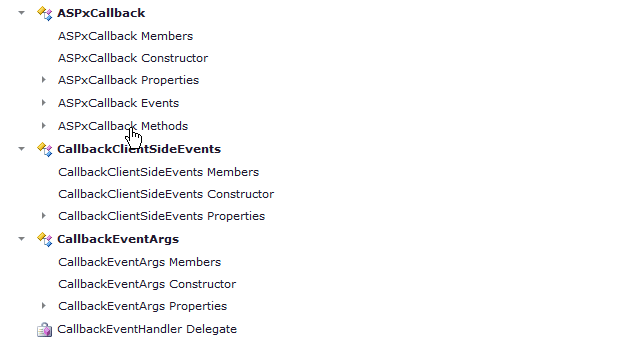Check out the new ASP.NET TreeView control coming soon in the DXperience v2010 volume 2 release. The new ASP.NET TreeView, called ASPxTreeView, will be part of the ASPxperience Suite:

TreeView vs TreeList
If there is already an ASP.NET TreeList Suite then why are we introducing a TreeView control?
- The ASPxTreeList is useful when you need to represent hierarchical data and/or perform CRUD operations.
- The ASPxTreeView is useful when you need a menu to iterate through hierarchically organized pages/information structures.
You can use them together in your project based on your particular needs.
In essence, we distilled the features to make a great navigation control with the tree view, but if you need the complete and impressive array of features go for the tree list.
ASPxTreeView Features
The ASPxTreeView is packed with great features:
- Semantic rendering
- Powerful Databinding – Primarily designed to be a site navigation control, the ASPxTreeView supports binding to data sources containing hierarchical data. Any object that implements the IHierarchicalEnumerable or IHierarchicalDataSource interface (e.g. SiteMapDataSource, XmlDataSource, etc.) may be used as a data source for the ASPxTreeView control.
- Virtual Mode – In addition to bound and unbound modes, the ASPxTreeView can operate in Virtual Mode, which greatly reduces both server load and start-up time when working with complex or dynamically created hierarchies. In Virtual Mode, data is retrieved on the server in portions, on a client request, at start-up and when expanding nodes. In essence, child nodes are created and initialized only when their parent node is expanded for the first time. This allows you to efficiently use server resources and to avoid retrieving the entire amount of hierarchical data for the ASPxTreeView.
- Expand/Collapse animations
- Check box support – display checkboxes on each node. You can also recursively check the child check box nodes.
- Node selection
- Node hot-tracking
- Node Link Mode – In the ASPxTreeView, nodes represent navigation elements (links). For nodes, you can activate a specific link mode, in which only certain node elements are clickable.
- Show/Hide tree lines
- Rich client-side events and functionality
- ASP.NET Templates support
- Right-To-Left support
- Callbacks (Ajax) support
- XHTML cross browser compliant – supports all major browsers
- Section 508 and Web Accessibility compliant
TreeList Only Advantages
Because the ASPxTreeView is for navigation purposes, here’s some features of the ASPxTreeList that are not (and likely will not) be part of the ASPxTreeView:
Basically, the ASPxTreeView does not have all the things that make the ASPxTreeList look and behave like a grid. Which is why the ASPxTreeView is a “lighter” control. However, the ASPxTreeView does pack a great set of features.
ASPxperience v2010 vol 2
The new ASPxTreeView will be part of the ASPxperience Suite in the DXperience v2010 volume 2 release later this year.
Are you looking forward to the new ASP.NET TreeView control?
Drop me a line below with your thoughts. Thanks!

DXperience? What's That?
DXperience is the .NET developer's secret weapon. Get full access to a complete suite of professional components that let you instantly drop in new features, designer styles and fast performance for your applications. Try a fully-functional version of DXperience for free now: http://www.devexpress.com/Downloads/NET/
Free DevExpress Products - Get Your Copy Today
The following free DevExpress product offers remain available. Should you have any questions about the free offers below, please submit a ticket via the
DevExpress Support Center at your convenience. We'll be happy to follow-up.